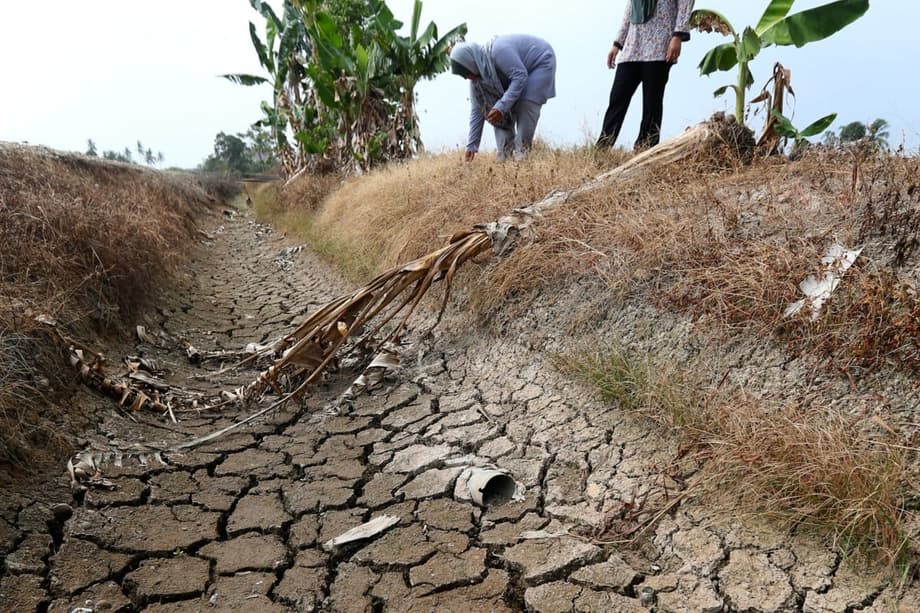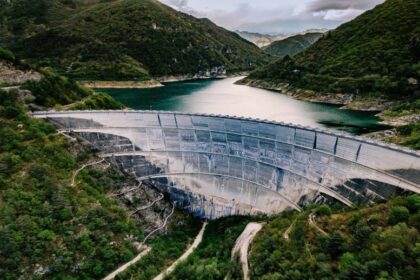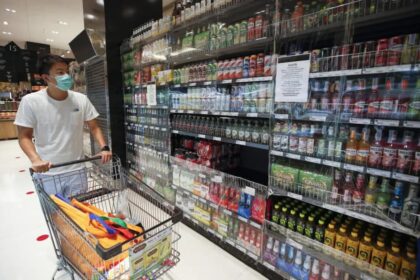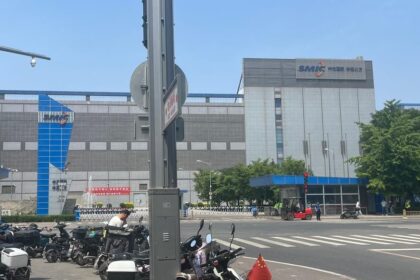A high stakes bet on AI meets fragile water systems
Johor is moving fast to become a core node in the global AI economy. New campuses backed by Microsoft, Nvidia, ByteDance and other giants are rising across the state, promising billions in investment and a new digital backbone for Southeast Asia. That promise now collides with a basic service at the heart of daily life, clean water delivered reliably to homes and businesses.
- A high stakes bet on AI meets fragile water systems
- Why data centers use so much water
- Johor’s boom by the numbers
- Recent outages expose weak points
- How officials are trying to balance growth with supply
- Can technology cut the thirst?
- Households, farms, and the fairness question
- Costs and market discipline
- Singapore’s pause, Johor’s sprint
- What must happen to keep taps and servers running
- Key Points
The tension became real for many residents when pollution in the Johor River forced the shutdown of multiple treatment plants and cut supply to large parts of the state. A flood of complaints followed as taps ran dry or trickled. For people like 35 year old Johor resident Muhammad Azrien Mohammad Ali, the growth story has a personal edge.
Introducing the resident in question and what he has faced in recent months, he described the anxiety that routine disruptions create.
“This year I have experienced three water disruptions. The water supply is there but it is now low compared to before.”
These interruptions landed just as investors scaled up the state’s data center buildout. The industry runs around the clock and needs steady water to keep servers cool. That demand, combined with drought risk and aging pipes, has made water the constraint that could define how far and how fast Johor’s digital ambitions can go.
Why data centers use so much water
Modern data centers pack thousands of servers into tightly controlled rooms. Processors generate heat as they compute, so operators must remove that heat constantly to keep equipment within safe temperatures. Traditional setups push cool air across hot servers, then expel or recirculate warmed air using chillers and cooling towers. Many large sites use evaporative cooling because water absorbs heat very well, which reduces power draw compared with all air systems, but consumes water in the process.
Industry rules of thumb illustrate the volumes involved. A single 100 megawatt facility can use roughly 4.2 million liters of water per day for cooling, which is similar to the daily needs of a small city of about ten thousand people. As AI related workloads increase, chips run hotter and denser racks become common, raising the cooling challenge further. The result is a steady pull on local water networks, often from the same potable supplies that households rely on.
Engineers measure efficiency with two yardsticks. Power usage effectiveness (PUE) compares total facility power with the energy that actually reaches servers, and water usage effectiveness (WUE) looks at liters consumed to keep computing loads stable. Policies in Johor now ask operators to meet tighter PUE and WUE targets. That push is meant to shave demand on both the grid and the tap, while nudging companies toward designs that cut water draws, like closed loop systems or liquid cooling.
Where a data center gets its water matters as much as how much it uses. Pulling from treated water can strain public networks during dry spells or pollution events. Shifting to non potable sources, such as reclaimed wastewater or direct river intakes treated on site, reduces pressure on household supplies and can keep servers running when the public system is interrupted.
Johor’s boom by the numbers
The buildout has accelerated with unusual speed. In the space of a few years, Johor moved from a small footprint to dozens of projects at various stages. Market trackers count more than forty sites built or under way, and hundreds of additional megawatts in the pipeline. A recent industry report placed planned capacity in the state above 5 gigawatts, with several hundred megawatts already live.
Across peninsular Malaysia, most of the action is concentrated in three states, Johor, Selangor and Negeri Sembilan. Malaysia’s National Water Services Commission (SPAN) has warned that the combined water needed by operational and planned data centers already far exceeds the capacity that local systems can deliver today. SPAN’s assessments show hundreds of millions of liters per day requested by operators in these states, while current infrastructure can reliably supply only a fraction of that volume. In Johor, only a minority of data center projects have secured approval for their full water demand. That mismatch explains the policy shifts unfolding at both the federal and state level.
Johor’s appeal is clear. Land is more available than in Singapore, which paused new projects earlier in the decade to review sustainability. Cross border links are deep, power grid upgrades are coming, and the state government has prioritized fast approvals through a dedicated coordination committee. The wager is that AI demand will keep rising, making the state a regional hub for years to come.
Recent outages expose weak points
Events in late year showed how fragile water systems can upend both homes and heavy industry. A silt pond embankment at a sand mining site failed, sending muddy runoff into the Johor River. Turbidity spiked far above normal levels, and four treatment plants along the river, including Linggiu and Semangar, had to halt operations. At the peak, more than one million customers were affected. Even after plants restarted, tens of thousands of accounts waited for full pressure to return while the network refilled.
Johor’s sole water operator said recovery would take time once plants came back online. A company spokesperson explained the expected timeline for restoring regular flow after the emergency.
“We expect the recovery period to take at least 12 hours for water to be fully restored, hopefully by midnight.”
State environmental officials issued enforcement actions against the operator of the site linked to the pollution, and they required remedial plans and monitoring to prevent a repeat. The incident underlined how non weather hazards, like dirtier rivers from nearby activity, can knock out supply just as surely as a prolonged dry spell.
For data center operators, outages are a cost and reliability problem. Facilities are designed with redundancy, including on site water storage, but repeated interruptions mean larger tanks, alternate water connections, and emergency treatment gear. Ben Shane Lim, head of research at New Paradigm Securities, said rising risk would change behavior across the sector.
“It will be a cost of doing business. Generally, data centers have a high level of built in redundancy. They will have several days of water stored on site. If these events become more frequent, data centers will simply increase their on site storage requirements accordingly.”
How officials are trying to balance growth with supply
Johor has created a technical committee to vet data center proposals, with a focus on water use, cooling design, and environmental impacts. Applications are screened on efficiency standards, and officials say projects without sustainable water plans face rejection. State leaders have also encouraged operators to tap non potable sources, including treated wastewater, groundwater, and direct river intakes with on site treatment. Closed loop systems that recycle water multiple times are promoted in these reviews.
A set of benchmarks has been introduced for new sites, including a PUE target of 1.4 and a WUE of 1.8 that reflects best practice in nearby markets. The state has also indicated that a share of proposals have been turned away for failing to meet water or power criteria. At the same time, Johor is planning new public works to add buffers to the system. Three Off River Storage schemes are in design for the Johor, Pontian, and Sedili basins, supported by new treatment plants scheduled around the end of the decade. The goal is to create reserve pools that can feed plants when river flows drop or contamination spikes.
The state has also moved to change pricing. From August, data center operators in Johor face a higher tariff for water compared with other non domestic users, charged by the state utility Ranhill. The new rate is intended to reflect the high volume and reliability demanded by the sector, and to steer companies toward alternatives that reduce stress on the public network.
Political leaders insist the state will serve investors and households. They argue a multi agency approval process prevents projects from moving ahead if utilities are insufficient. The message is reassurance, but also a signal that data center operators must build with sustainability at the center of their plans.
Can technology cut the thirst?
Cooling innovation is the most promising path to reduce water footprints. Traditional air cooling uses large fans and chillers to move cold air around racks, then relies on evaporative towers that consume water. New approaches, many already in the field, target the hottest server components directly with liquid in sealed systems. These include direct to chip cooling, immersion cooling where servers are placed in non conductive fluid, and precision liquid cooling that only cools select parts.
Advocates say these designs cut both power and water use at once. A precision system can replace energy hungry fans with small pumps, and by removing heat at its source, it can run efficiently even in warmer ambient conditions. Proponents in Asia report energy savings per server on the order of several tens of percent compared with air cooled racks. Because these systems are closed loop, they also use very little water. That combination is attractive in Southeast Asia, where ambient temperatures are high and water can be scarce or unreliable during dry periods.
Adoption has been gradual. Operators tend to mix new and old methods, especially where workloads vary from high density AI training to lighter tasks. Upfront costs and retrofits also slow transitions. Still, hyperscale builders in Johor are beginning to invest in non potable sources and on site treatment that complement more efficient cooling hardware.
One major operator has built a dedicated water reclamation plant near Ulu Tiram to supply its upcoming campus, using treated sewage effluent piped from a nearby plant. The facility currently processes five million liters per day and can be expanded to four times that volume as demand grows. The setup uses reverse osmosis in multiple stages to purify wastewater into cooling grade supply. Agreements signed with wastewater and special water agencies now send tens of millions of liters per day of non potable supply to several data center projects, while another operator plans to use recycled water across two campuses in Johor Bahru. Elsewhere in the state, a developer will treat raw water from the Tebrau River on site for its next campus, reducing dependence on household grade supplies.
Policy makers and regulators have urged the sector to pivot faster in this direction. Charles Santiago, former chairman of SPAN, said the use of alternative sources should be encouraged at scale.
“Any effort that uses alternative water must be welcomed. It signals that there is strong public and private commitment.”
The expectation is that higher tariffs, stricter standards, and public pressure will speed the shift to recycled water and more efficient cooling. That aligns with broader sustainability targets for the industry, including new national guidelines that require operators to measure and reduce environmental footprints.
Households, farms, and the fairness question
Water scarcity affects communities first. Farmers near tech parks draw on drains and groundwater for irrigation, and they feel the pinch when river flows drop or when pollution sends treatment plants offline. Families worry that industry might get priority when supplies run tight. Those concerns deepened as data centers multiplied and as some corporate ties to utility operators raised questions about how allocations might be decided during a crunch.
Advocates argue for clear rules that put domestic needs first during emergencies, with transparent criteria for rationing when needed. They also want better monitoring of extraction and discharge along key rivers to prevent the kind of pollution that triggered the recent shutdowns. The next dry season will test whether new policies and projects can protect fragile parts of the network from cascading failures.
Costs and market discipline
Water risk is now a line item in every data center budget. Repeated interruptions push operators to add storage tanks, dual feeds, and on site treatment. Those capital choices add cost but improve resilience. Investors are also learning that sites without access to alternative water will pay higher operating costs or face delays while infrastructure catches up. Analysts note that while a single disruption may not change behavior, a pattern of outages forces design changes at scale.
That market discipline is reinforced by policy. Tariff changes increase the price of using treated water for cooling, and approval processes now test whether a project has reliable alternative sources. In some cases, state authorities have turned down proposals that did not meet water efficiency or sourcing standards. Meanwhile, power constraints at popular sites like Sedenak Tech Park have nudged operators to look for new land where water and power can be secured together, spreading growth to areas with more available resources.
Singapore’s pause, Johor’s sprint
Regional dynamics helped set Johor’s course. When Singapore halted new projects to update sustainability rules earlier in the decade, many builders looked north. Johor offered larger parcels, lower costs, proximity to talent and network routes, and a government eager to diversify the economy. As AI demand exploded, especially after the rise of large language models, the race quickened. Training AI models can happen far from end users, so builders prioritized sites with land, power, and supportive policies.
That surge delivered jobs during construction and new roles for technicians, electricians, and engineers, though long term staffing per site is modest once facilities are up. The larger bet is that clustering will attract other digital businesses and a services ecosystem. The risk is overbuilding if demand softens or if bottlenecks in power and water take too long to solve. Either way, the new economics of water and energy will shape which projects proceed and which stall.
What must happen to keep taps and servers running
Johor’s promise and its constraints can be managed with clear steps that are already in motion, but need scale and urgency.
Protect and expand raw water buffers
Off River Storage pools and new treatment plants must arrive on schedule. These buffers give operators room to maneuver when rivers run muddy or low. Guarding catchments from pollution, and enforcing discharge rules for industrial sites, reduces the odds of sudden plant shutdowns.
Make non potable water the default
Reclaimed wastewater and river intakes treated on site should serve as primary sources for new data centers. Priority for household grade water should sit with communities and healthcare. Pricing and approvals can lock in that hierarchy.
Upgrade pipes and measure losses
Leaks waste large volumes before water reaches the tap. Investment in repairing aging networks and installing better monitoring reduces non revenue water and stretches supply without building new dams or treatment plants.
Set and enforce efficiency standards
Clear WUE and PUE targets, backed by audits, nudge operators toward closed loop cooling, better heat containment, and higher density designs that do more with less. When proposals fall short, they should not proceed until designs meet the bar.
Plan for emergencies
Sites should include adequate on site storage, backup treatment, and dual feeds. Emergency playbooks coordinated with the state utility can speed recovery when outages hit. Communities should know which areas will see rotating cuts first and which critical services are protected.
Key Points
- Johor’s data center investments have surged, backed by global tech firms and state support, but water reliability is now the main constraint.
- Recent pollution in the Johor River forced multiple treatment plants offline, cutting supply to more than one million customers and exposing system fragility.
- SPAN warns that water requests from data centers in key states exceed current capacity, and urges a pivot to alternative sources and tighter standards.
- Johor created a technical committee, set stricter PUE and WUE benchmarks, raised water tariffs for data centers, and is advancing new storage and treatment projects.
- Operators are adopting reclaimed wastewater and river intakes with on site treatment, and exploring liquid cooling to reduce water and power use.
- Analysts expect higher resilience costs, including bigger on site storage, while approval processes increasingly favor projects with sustainable water plans.












